Exploring the Spiritual Significance of the Ganges River
Uncover the deep spiritual and cultural relevance of the Ganges River in Hinduism and why it is revered as a goddess in Indian tradition.
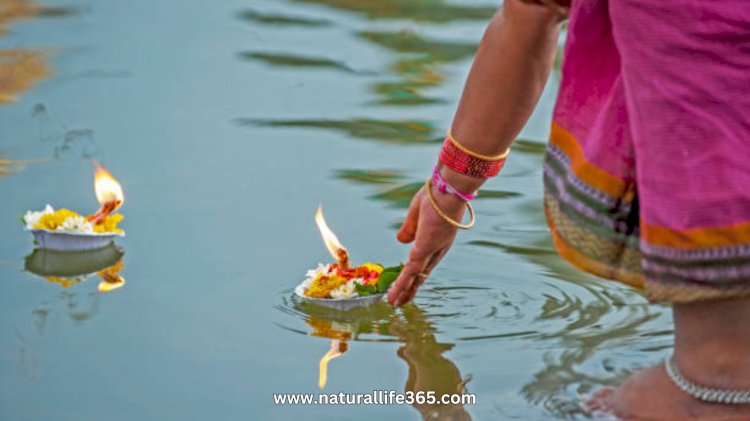
The Ganges River isn’t just a body of water—it’s a living, breathing thread woven into the soul of India. Revered, prayed to, and intimately woven into the everyday lives of millions, the Ganges (or Ganga, as she's affectionately called) flows through geography and spirit alike. Her presence is constant—at birth ceremonies, in prayers, at funerals, and even in the hopes of redemption. But what exactly gives the Ganges her sacred status? What makes her more than just a river? Let’s explore the spiritual meaning of the Ganges River in Hinduism, understand why the Ganga River is sacred in Indian culture, and unpack the rituals and beliefs linked to the Ganges.
You can also read Understanding The Essential Nature of Hinduism
The Ganges: Not Just a River, but a Goddess
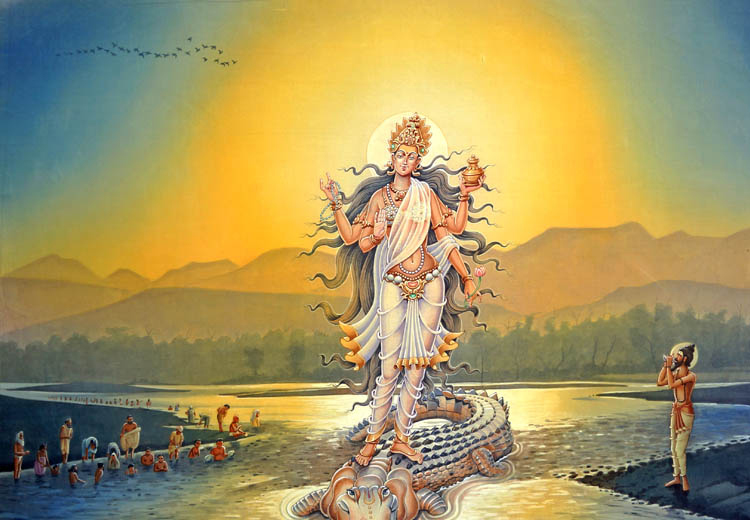
In Hindu belief, the Ganges isn’t merely a river—she is Maa Ganga, a mother goddess. According to mythology, she descended from the heavens to Earth to purify souls and wash away sins. The legend goes that King Bhagirath performed intense penance to bring her down from the celestial realms to cleanse the ashes of his ancestors, ensuring their liberation (moksha).
But Ganga’s descent wasn’t simple. Her forceful arrival threatened to destroy the earth. So, Lord Shiva captured her in his matted hair and gently released her flow. This myth is more than storytelling—it’s a spiritual metaphor. Ganga’s waters are considered divine, her flow symbolic of mercy, and her journey one of purification.
This is where the spiritual meaning of the Ganges River in Hinduism truly begins: Ganga is both grace and discipline. Her waters don’t just quench thirst—they offer a path to spiritual release.
Why Ganga River Is Sacred in Indian Culture
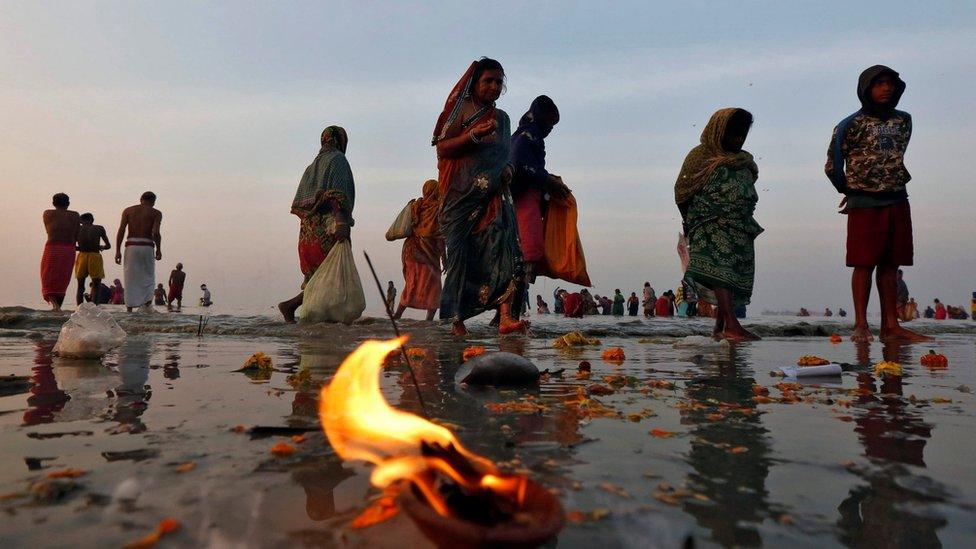
From the snow-clad Himalayas to the Bay of Bengal, the Ganga flows through India’s physical and cultural heart. But the question often arises: Why is the Ganga River sacred in Indian culture?
The answer is layered.
- Mythology Meets Daily Life
For Hindus, mythology is not confined to stories—it’s deeply embedded in daily practice. People treat Ganga as a real mother. She’s invoked during rituals, her water is stored in copper pots in homes, and a sip of it is believed to purify the soul. In weddings, funerals, and even housewarmings, Ganga jal (Ganges water) plays a role. - A Pathway to Liberation
The ultimate goal in Hinduism is moksha, or liberation from the cycle of birth and rebirth. Bathing in the Ganges is believed to cleanse a person’s karma and move them closer to that liberation. Dying near the river or having one's ashes immersed in it is considered especially auspicious. Varanasi, the ancient city on its banks, is said to offer an express route to salvation. - Cultural Backbone
The Ganga is more than religion. It has inspired poets, fed civilizations, and been a silent witness to history. From ancient kingdoms to Mughal empires, from colonial struggles to modern-day democracy, Ganga has remained a constant.
This mix of history, belief, and lived reality is what makes her sacred—not just in temples, but in the hearts of people.
Rituals and Beliefs Linked to the Ganges
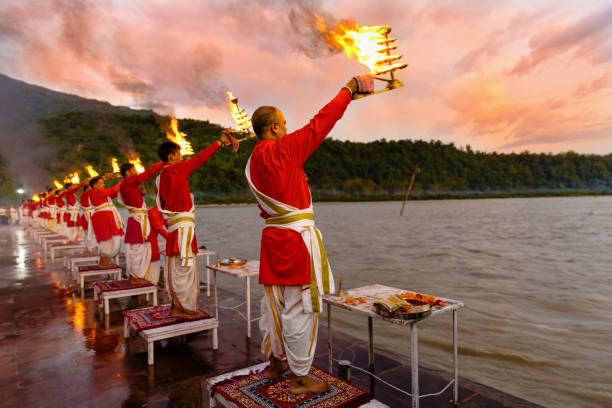
If you've ever stood at a Ganga ghat (steps leading to the river), especially in places like Haridwar or Varanasi, you’ve likely felt the pulse of devotion in the air. Bells ringing, flames dancing in the wind, and chants echoing over the waters—it’s an unforgettable experience.
Let’s break down some key rituals and beliefs linked to the Ganges:
1. The Holy Dip
One of the most widespread practices is taking a dip in the Ganga. Devotees believe that even a single bath washes away lifetimes of sins. Pilgrims from across India travel for days—sometimes barefoot—to bathe during festivals like Kumbh Mela, when the spiritual power of the river is believed to multiply.
2. Ash Immersion
The Ganges plays a central role in funeral rites. After cremation, ashes are scattered into her waters to help the departed soul attain peace. There’s a quiet dignity in this ritual—a belief that death, too, has meaning when it meets the river.
3. Ganga Aarti
Every evening, priests perform the Ganga Aarti—a fire offering to the river. Thousands gather to witness the synchronized ritual of light and prayer. Floating lamps are set on the water, each carrying a wish or a whisper to the divine.
4. Pilgrimage Towns
Cities like Rishikesh, Haridwar, Allahabad (Prayagraj), and Varanasi aren’t just tourist spots—they’re pilgrimage destinations centered around the Ganges. People visit not just to see, but to experience, to purify, to transform.
5. Ganga Dussehra
This annual festival celebrates the descent of Ganga to Earth. Devotees fast, chant, and bathe in the river, offering flowers, lamps, and prayers. It’s a day to remember her origin and thank her for her endless compassion.
The Ganga in Everyday Faith

The spiritual presence of Ganga isn’t limited to temples or holy cities. Even in urban homes and rural villages, the river is a part of life. Bottled Ganga jal is sprinkled during house blessings. People send small vials of it to loved ones abroad. For many, having Ganga water at home is like having a piece of divine protection.
What’s striking is how Ganga bridges the sacred and the personal. She’s both a cosmic force and a family member. Children are told stories of her power, elders whisper her name in prayer, and artists capture her essence in music and painting.
The spiritual meaning of the Ganges River in Hinduism isn’t abstract—it’s tactile, real, and alive.
You can also read The Spiritual Meaning Behind Lord Shiva's Symbols
A River in Crisis: Sacred but Struggling

For all her glory, the Ganges today faces serious challenges. Pollution, industrial waste, and urban runoff threaten her purity. However, if you had the opportunity to travel and visit different cities in India, you may have noticed that the Ganga River looks dirtier in some cities than in others, but why?
The level of pollution in the Ganges varies widely along its 2,500-kilometer journey. Here's why it’s more polluted in some places and cleaner in others:
1. Population Density and Urbanization
In cities like Kanpur, Varanasi, and Patna, the river flows through dense urban areas with massive populations. These cities generate tons of untreated sewage, solid waste, and industrial discharge. Many of these pollutants are dumped directly into the river without adequate filtration.
Contrast that with smaller towns like Rishikesh or Haridwar, which are not only less industrialized but also have stricter religious oversight. There’s a cultural pressure to keep these spiritual hubs cleaner, especially because they attract large numbers of pilgrims.
2. Industrial Activity
Some cities along the Ganga—especially Kanpur—have heavy industries nearby, such as leather tanneries and chemical plants. These factories often release untreated or poorly treated wastewater into the river. These pollutants are highly toxic and much harder to clean up than household waste.
Places like Devprayag or Gangotri, where the river originates, have no major industrial presence. Naturally, the water appears much cleaner.
3. Municipal Infrastructure
Not every city has the capacity to treat its sewage. Many Indian cities, especially older or underfunded ones, lack modern sewage treatment plants. Or the ones that exist may be outdated or overwhelmed.
For example, Kolkata, despite being a major metro, has aging infrastructure and a high volume of runoff entering the Ganges through tributaries like the Hooghly River.
4. Cultural Attitudes and Enforcement
In spiritual centers like Haridwar or Rishikesh, there’s both respect for the river and active enforcement of cleanliness during major religious events. Volunteers, government bodies, and NGOs often work together to keep the river clean in these cities, especially during pilgrimage seasons.
But in other cities, religious rituals can ironically lead to pollution, such as immersing idols, burning offerings, or releasing floral waste—all done without eco-friendly alternatives or oversight.
5. Geographic Factors
Upstream locations like Gangotri, where the Ganga begins, naturally have cleaner water. There’s little human interference at that altitude. As the river flows downstream, it accumulates more and more pollutants from various sources.
In places where tributaries like the Yamuna or Gomti merge in, they often bring in pollution from their own upstream sources, compounding the problem.
So Why Does It Matter?
The spiritual meaning of the Ganges River in Hinduism emphasizes purity, transformation, and healing. Yet the reality is that in many cities, the sacred river is being suffocated. This contrast between belief and behavior raises a critical question for everyone—devotees, governments, and citizens alike: How do we honor what we claim to hold sacred?
The answer isn’t just better infrastructure—it’s cultural, ethical, and spiritual alignment. Keeping Ganga clean is not just an environmental duty. It’s a deeply spiritual act of respect.
What the Ganges Teaches Us Today
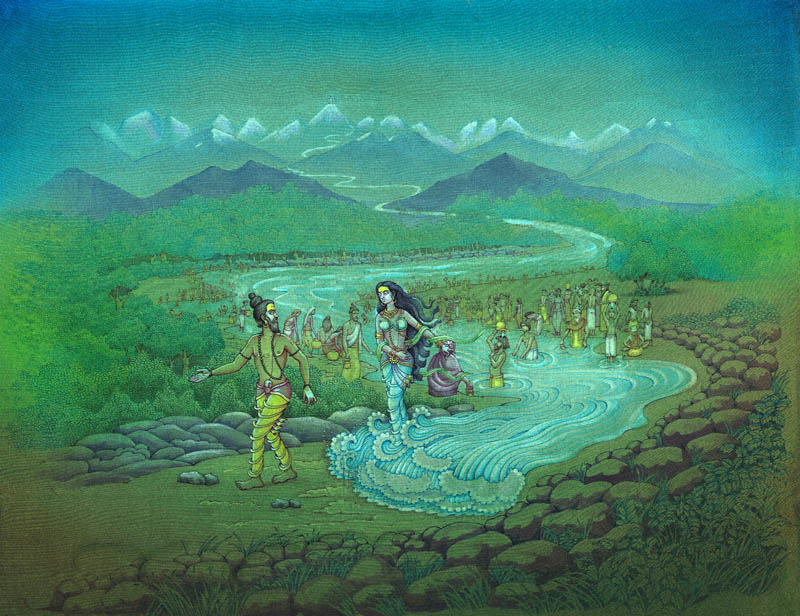
So what can we, modern readers, really take away from the spiritual significance of the Ganges River?
- Interconnectedness: Ganga represents the link between the divine and the earthly. She reminds us that spirit and matter aren’t separate—they flow into each other.
- Redemption: No matter how broken, polluted, or flawed, the Ganges offers forgiveness. Her waters teach us that renewal is always possible.
- Responsibility: Loving something sacred means protecting it. Reverence without care is empty. The future of Ganga depends on a shift from worship to stewardship.
Final Thoughts: Let the River Flow Within
Understanding why the Ganga River is sacred in Indian culture isn’t just about facts—it’s about feeling. It’s about standing on the riverbank and realizing you’re part of something timeless.
In an age that moves fast and forgets even faster, the Ganges asks us to slow down. To remember. To reflect.
Her current isn’t just water. It’s memory. Myth. Mercy. And most of all, a mirror. One that reflects not just who we are—but who we aspire to be.
As long as the Ganga flows, so too does the spirit of India. Let’s honor that—with reverence, responsibility, and renewed awareness. Not just by praying at her banks, but by protecting her for generations to come.
If you value these free online resources provided by Natural Life 365, please consider supporting my website by sharing the blogs ![]()








































